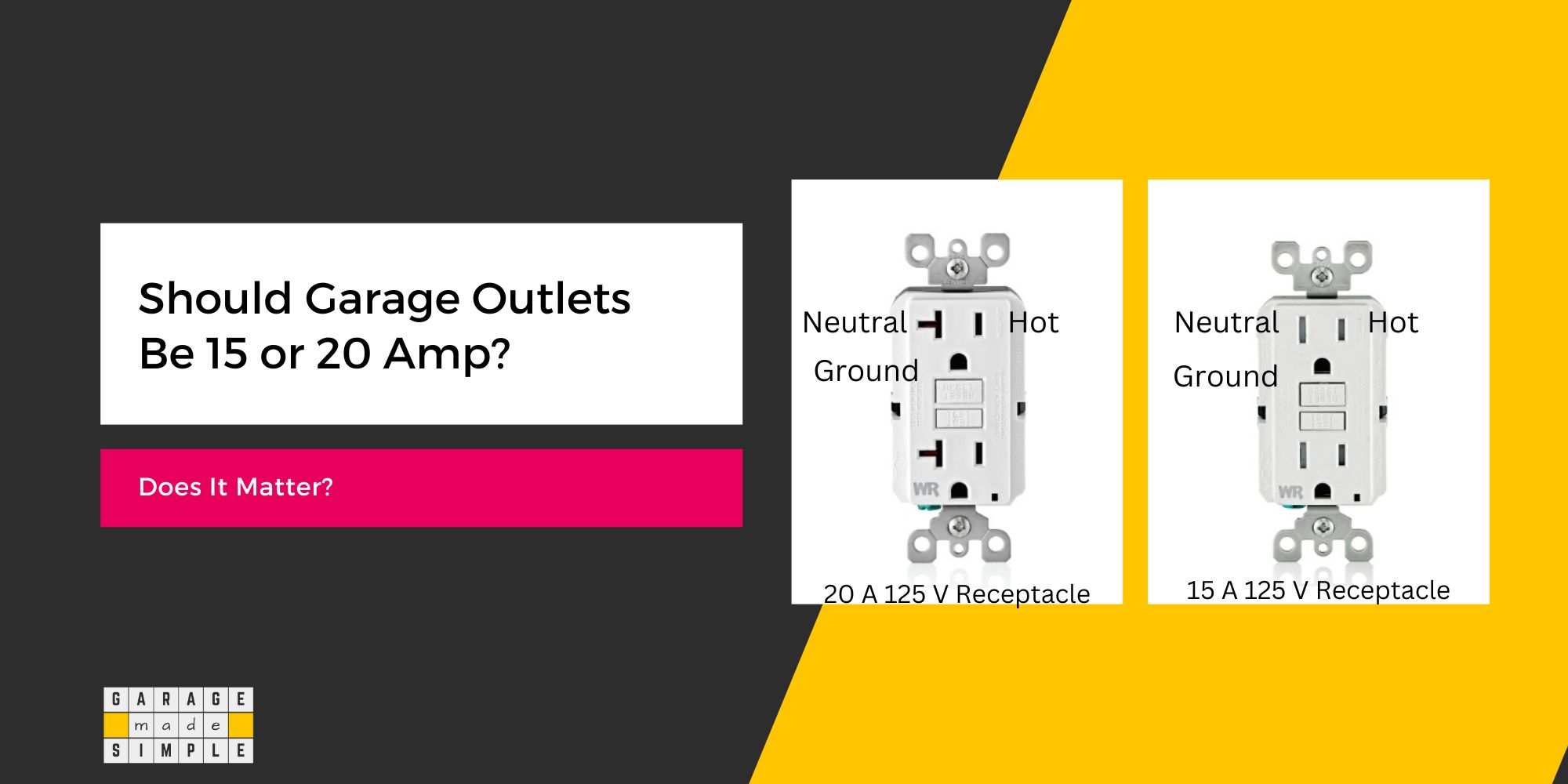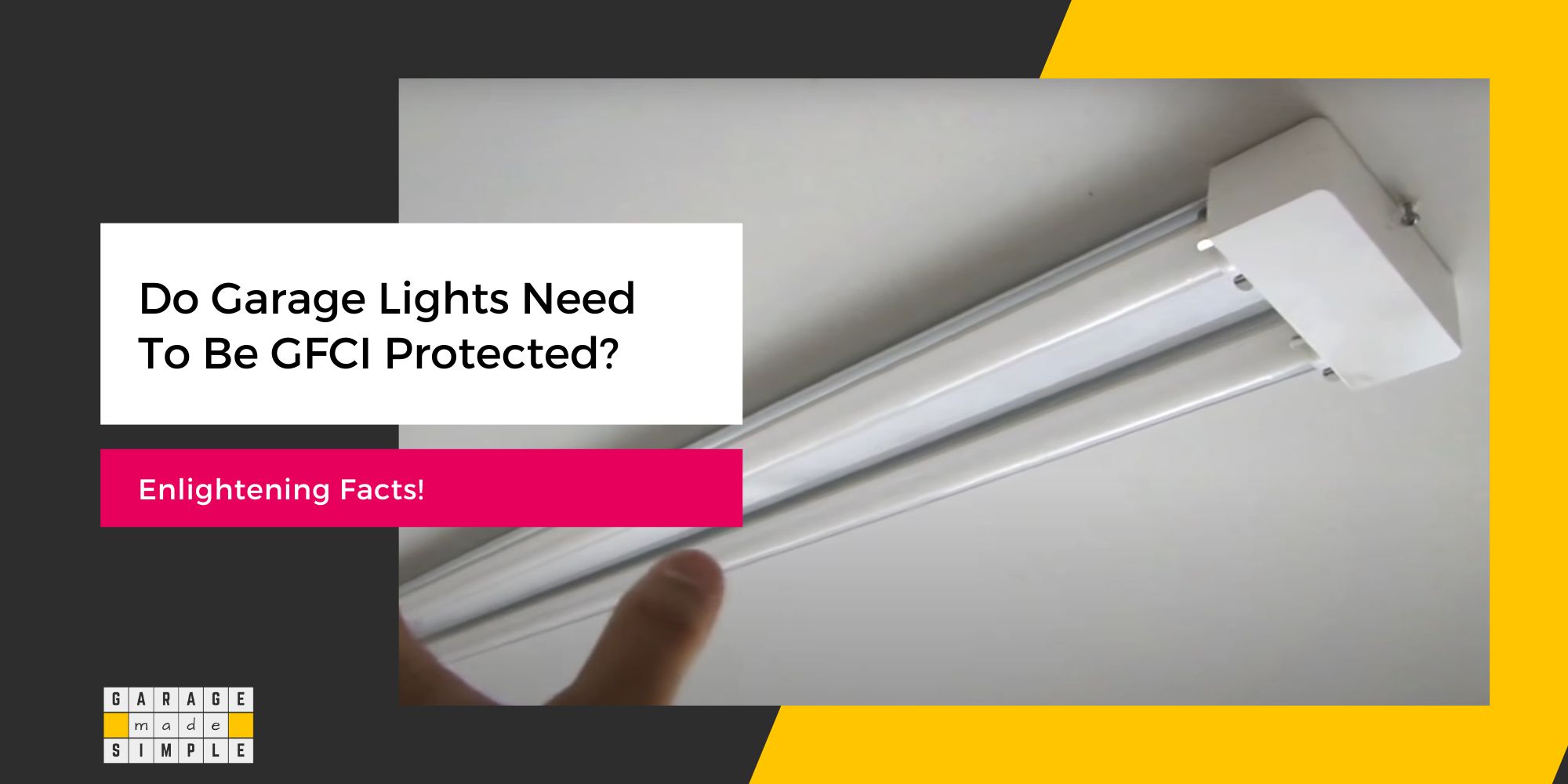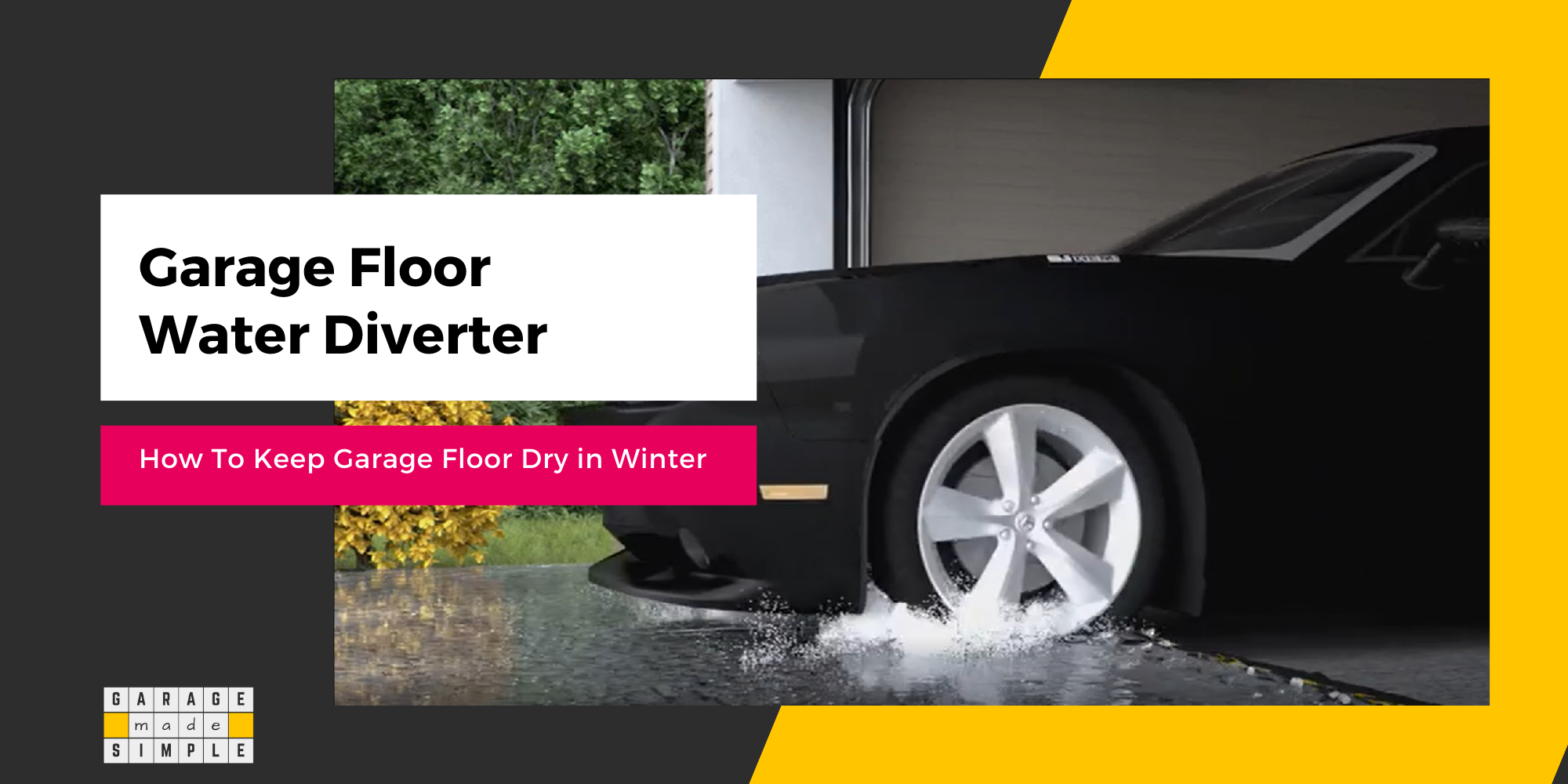7 Amazing Benefits of LED Garage Lights with Motion Sensors!
As an Amazon Associate, I earn from qualifying purchases.
What Are LED Garage Lights With Motion Sensors?
If you’ve ever wanted a lighting solution that’s smart and efficient, LED garage lights with motion sensors are the way to go.
Motion sensors, as the name suggests, can detect movement and instantly turn on the light, providing illumination exactly where and when you need it. They are super convenient and useful for a variety of reasons.
Imagine getting into your garage late at night. No more fumbling for switches in the dark! The motion sensor garage lights turn on based on your movement.
Once you walk into the house through the garage entry door, the lights turn off, after a preset interval. This not only saves energy but also extends the lifespan of the bulbs.
If you have a large garage, you can use multiple motion sensors and wire them up such that only the lights in the section you are working light up. No need to waste electricity on the areas where it’s not required.
LED garage lights with motion sensors aren’t just for indoor use. They’re equally handy outdoors too. Whether you’re parking your car, taking out the trash, or simply strolling in your yard, these lights will make sure you have a well-lit path.

How Do LED Motion Sensor Lights Work?
The heart of the LED motion sensor lights system is the motion sensor. The motion sensor may use one of the following technologies:
Passive Infrared Sensors (PIR): These sensors monitor the infrared energy in their range. When they sense changes in the heat pattern they deduce that it is because of motion of a human being or an animal. This detection is used to trigger the lights.
Active Infrared Sensors: With transmitters and receivers, they emit waves and detect disturbances, like someone entering a room.
Microwave Sensors: These motion sensors use microwave pulses and detect changes in reflection patterns.
Photoelectric Sensors: These motion sensors detect and react to light changes. When someone enters a lit area, the light level and pattern changes, activating the sensor.
Dual Technology Sensors: Combining PIR and microwave tech, they provide a double layer of detection for higher accuracy.
The Inner Workings of PIR Sensors
This is how Passive Infrared (PIR) Sensors function:
Receiving, Not Emitting: PIR sensors are passive because they don’t send out energy. They receive infrared data emitted by objects.
Temperature Differential: A PID (pyroelectric sensor chip) in the PIR detects infrared energy differences caused by body heat.
Signal Release: When the infrared change surpasses a set limit, the PID releases a signal, activating the light.
Installation and False Responses: Proper installation and positioning prevent false activations from HVAC vents or temperature fluctuations.
Can LED Lights be Used in the Garage?
LED lights have become the rule rather than the exception when it comes to residential lighting. LED lights are significantly better than incandescent, fluorescent and halogen bulbs as they are much more energy efficient and last much longer.
LED lights can be used in residential garages, both in interior and exterior applications. Here are some examples:
Indoor Brilliance
LED lights are perfect for your garage’s interior. Mount them on the ceiling or walls to illuminate every corner uniformly. They’re bright, energy-efficient, and can offer a crisp white light if required.
Overhead Excellence
Consider installing LED shop lights or panel lights. They distribute light evenly, reducing harsh glare and making your garage a more comfortable workspace.
Under-Cabinet Magic
For workbenches, under-cabinet LED lights are fantastic. They provide focused lighting exactly where you need it for intricate DIY tasks, such as those involving electronics or precise measurements.
Motion Sensors Inside
Boost convenience with LED light featuring motion sensors. They’ll turn on automatically as you enter the garage, no switches needed.
Outdoor Brilliance
Don’t forget about the garage’s exterior. LED lights add curb appeal and security. Use timers, motion sensors or dawn-to-dusk sensors to automate them.
Wall-mounted Ambiance
Use wall-mounted LED sconces to create a warm, welcoming atmosphere outside your garage. Place them beside the garage door. For enhanced curb appeal, coordinate all outdoor garage lights for a designer look.
Pathway Illumination
Line your driveway with LED path light. They guide your way while enhancing your home’s aesthetic. Make them solar powered for eliminating energy bills and impact on the global ecology.
Garage Door Enhancement
Try LED strip light along the garage door frame. They add a stylish touch and keep your entrance well-lit.
Motion Sensors Outside
Outdoor motion sensor activated LED lights will deter intruders such as potential burglars and wayward wildlife.
Check out
Maxsa 44215 Solar Motion Activated Dual Head Light
- Perfect for entryways, walkways, sheds, patios, balconies, decks, steps, garages, driveways, carports and backyards
- 4 super bright LEDs produce over 160 lumens
- Solar powered and easy DIY installation
- 3 rechargeable NiMH batteries provide up to 150 one-minute activations when fully charged
- Detects motion up to 30-feet away within a 180° area
Holiday Season Cheer
Use a wide variety of colorful LED lights to decorate your garage, driveway and front yard for Christmas. Hanging Christmas lights around your garage is sure to get you in the right mood for celebrations!
Why Choose LED Lights for Your Garage?
When it comes to lighting up your garage, or for that matter your home or the landscape, LED lights are the top choice for a bunch of awesome reasons.
Energy Efficiency
LED lights are like eco-friendly superstars. They use way less energy than traditional bulbs, saving you money on your bills.
Lumens is a measure of the brightness from a light source whereas Watts is a measure of the energy it consumes. The table below clearly demonstrates the energy efficiency of LED lights
| Energy Efficiency | |
| Light Source | Energy Efficiency (Lumens/Watt) |
| Incandescent | 12-18 |
| Halogen | 10-20 |
| LED | 75-110 |
Long-Lasting
LEDs have serious staying power. They last way longer than other bulbs, so you won’t have to keep changing them.
Typical Average Rated Life for Various Types of Bulbs
| Incandescent | 750-2,000 hours |
| Fluorescent | 24,000-36,000 hours |
| HID | 10,000-24,000 hours |
| Compact Fluorescent (Plug-in) | 10,000-20,000 hours |
| Compact Fluorescent (Screw-based) | 8,000-10,000 hours |
| Halogen | 2,000-4,000 hours |
| LED | 40,000-50,000 hours |
Data Source: Bulbs.Com
Cool and Safe
Unlike old-school incandescent, fluorescent or halogen bulbs, LEDs stay cool to the touch. No worries about accidentally burning yourself or starting any fires!
Wide Temperature Range
LEDs come in different colors and styles. You can choose a warm or cool light to match your garage’s vibe.
High temperature LED lights give you a clean, crisp and bright light that’s perfect for working on DIY projects. No more straining your eyes when working on projects.
Low temperature LED lights on the other hand, give a soft warm glow and are ideal for garage door lights as they add to the curb appeal of your home.
No Flickering Drama
LEDs turn on instantly and don’t flicker. That means you get steady light, instantaneously, without any annoying delays.
Low Maintenance
Since LEDs last so long, you’ll spend less time climbing ladders to replace bulbs. Win-win!
Environmentally Friendly
LEDs are free of toxic materials. When it’s time to say goodbye, they’re easier on the planet to dispose of.
Savings Galore
With their energy efficiency and long lifespan, LEDs save you money in the long run. More cash in your pocket!
Do LED Lights Work With Motion Sensors?
Absolutely! LED lights are a perfect match for motion sensors, creating a smart and efficient lighting duo.
LED lights work seamlessly with motion sensors, enhancing energy efficiency and convenience. The combo of LED lights and motion sensors save even more energy as the lights get activated only when needed.
LEDs turn on and turn off instantly, making them ideal for motion-activated sensors. The response to the motion is instantaneous.
As it is, LEDs last longer than other bulbs. By pairing them with motion sensors further increases the number of years the LED will last as it works only as long as needed.
LED lights and motion sensors are, in fact, a complementary duo. They bring efficiency, convenience, and smart lighting to your garage while enhancing safety and security.
What Are The Benefits of LED Garage Lights with Motion Sensors?
There are 7 amazing benefits of LED garage lights with motion sensors as under:
| Benefits of LED Garage Lights with Motion Sensors |
|---|
|
1. Energy Savings LED garage lights with motion sensors is terrific when it comes to energy efficiency. It only turns on when needed. The result is no energy wastage and a reduction in electricity bills. |
|
2. Convenience No more fumbling in the dark. The light turns on the minute you step into your garage. The motion sensor detects your presence and turns on the garage LED lights. You never have to search for a switch again. |
|
3. Increased Safety Moving around in a garage that is not adequately lit can result in accidents, as you can trip over equipment or knock down items on the workbench or storage shelf. LED garage lights with motion sensors greatly reduce the risk of such accidents. Motion-activated lights come on in the section of the garage that you walk into, making your space safer and easily navigable. |
|
4. Enhanced Task Lighting Need to work on a DIY project in your garage at night? No need to turn on all the garage lights! Motion sensors ensure immediate illumination, at the work spot, providing focused lighting for your tasks. |
|
5. Prolonged Bulb Life LED bulbs are already well known for their longevity. Motion sensors help further prolong their life. Motion sensors ensure the lights are on only when necessary. The LED garage lights with motion sensors last many more years. |
|
6. Amped-Up Security LED garage lights with motion sensors do more than just illuminate your garage. Lights that are controlled by motion sensors can startle an intruder and cause them to panic and flee. In effect, LED garage lights with motion sensors provide an additional layer of security to your home and belongings. |
|
7. A Cost-Effective Choice While there might be a slightly higher upfront cost, LED garage lights with motion sensors save you money in the long run. Reduced energy consumption and fewer bulb replacements add up and compensate for the initial higher cost. |
Check out
- GO TOUCH-FREE: Using the Philips Hue Motion Bundle, you can activate your lights hands-free. The Hue Motion Sensor can detect how much light there is, so your smart lights are never too bright or dim.
- FULLY CUSTOMIZABLE: The Philips Hue app allows you to manage the motion sensor’s sensitivity and hand-pick which Hue lights you would like to activate. Customize specific settings to allow you to see at night without full brightness or for lights not to activate during the day.
- HUE HUB REQUIRED: To pair your Bluetooth bulbs with the Philips Hue Motion Sensor, a Hue Hub is required.
Factors to Consider When Choosing LED Garage Lights with Motion Sensors
Choosing the right LED garage lights with motion sensors requires a bit of know-how. Let’s break it down!
Brightness Matters
Look for lumens—the higher, the brighter. Consider your garage’s size and the level of brightness needed.
Coverage Area
Check the light’s coverage area. Make sure it covers all the necessary spots without leaving any dark corners. You will need to design the light placement with care.
Detection Range
Pick a light with a motion sensor range that suits your garage’s layout. Too wide a range might trigger false activations.
Adjustable Sensitivity
Choose motion sensor activated garage lights with adjustable sensitivity to fine-tune when they activate. This may be somewhat of an issue for outdoor garage lights, if your garage is close to a street with lots of traffic.
Duration Settings
Select light with customizable duration settings. You decide how long the light stays on after motion is detected.
Weather Resistance
For outdoor use, ensure lights and sensors are weather-resistant, durable, and can handle different conditions.
Color Temperature
Consider color temperature for the right ambiance. Warmer tones are cozy; cooler ones are focused and alert.
Installation Ease
Choose lights and sensors that are easy to install. Some might need hardwiring, while others plug into outlets.
Thank you very much for reading the post. I do hope you found it informative and useful.








